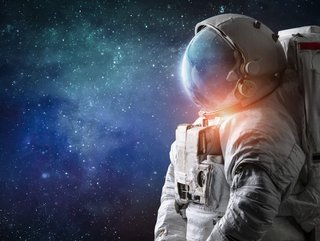NASA aims to use AI and ML for new UAP (UFO) research

A recent report conducted by NASA has found that artificial intelligence and machine learning (AI/ML) are “essential tools” for identifying rare occurrences, including UAPs (UFOs).
NASA has said that it will begin using AI and citizen reporting to study UFOs with the goal of better understanding the phenomena. The agency has said that one of the biggest challenges of better understanding and identifying UAPs is a lack of data and is therefore aiming to plug that gap through crowdsourcing techniques.
The public are also considered by NASA as being a “critical aspect of understanding UAP” moving forward.
Data collection as paramount to AI identifying rare occurrences
This report aligns with NASA announcing that it has named a new director of research into “unidentified anomalous phenomenon” (UAP), despite an independent panel revealing that they have found no evidence of extra-terrestrial origin for these objects.
The director of research has not yet been named, but comes after the panel recommended in the report that NASA would do well to increase its efforts to gather more information on UAP and play a larger role in helping the Pentagon detect them, according to Reuters.
Appropriate data collection, curation and distribution are paramount, according to NASA, and it aims to use its world-leading experience in these aspects to play a leading role. This work includes "open-source smartphone-based apps" and other smartphone metadata from "multiple citizen observers worldwide".
There is currently no standardised system for aggregating and organising civilian UAP reports, NASAs report said, "resulting in sparse and incomplete data".
NASA is already using AI as a way to improve exploration, find new celestial objects and improve astronauts’ lives in space. In particular, the agency has been developing its own companion for its astronauts on the ISS, Robonaut. Robonaut is a dexterous humanoid robot designed to expand NASA’s ability for construction and discovery.
Speaking on rare occurrences, NASA also said: AI and machine learning (AI/ML) has “proven to be essential tools for identifying rare occurrences within vast datasets.” NASA believes that its expertise should be utilised in conjunction with existing methodologies to investigate UAPs by examining data from sources like satellites and radar systems.
UAP analysis is currently limited: The proposal of new analysis techniques
However, NASA has stated in its report that the effectiveness of AI/ML in studying UAPs depends upon the quality of the data used to train the AI. It states that UAP analysis is more limited by the quality of data than by the availability of techniques and so it is a higher priority to obtain better quality data than it is to develop new analysis techniques.
NASA continued: “The panel finds that sophisticated data analysis techniques, including AI/ML, must be used in a comprehensive UAP detection campaign when coupled with systematic data gathering and robust curation. Here, we recommend that NASA’s expertise in these key areas be contributed to the whole-of-government UAP effort.”
This news comes in the wake of NASA turning to AI to design mission hardware earlier in 2023. NASA confirmed that spacecraft and hardware designed by AI tolerates higher structural loads and requires a fraction of the time parts by humans take to develop. AI-assisted design is an industry that continues to grow and attests to how AI/ML can improve digital readiness and assist in operational transformation.
******
For more insights into the world of AI - check out the latest edition of AI Magazine and be sure to follow us on LinkedIn & Twitter.
Other magazines that may be of interest - Technology Magazine | Cyber Magazine.
Please also check out our upcoming event - Cloud and 5G LIVE on October 11 and 12 2023.
******
BizClik is a global provider of B2B digital media platforms that cover Executive Communities for CEOs, CFOs, CMOs, Sustainability leaders, Procurement & Supply Chain leaders, Technology & AI leaders, Cyber leaders, FinTech & InsurTech leaders as well as covering industries such as Manufacturing, Mining, Energy, EV, Construction, Healthcare and Food.
BizClik – based in London, Dubai, and New York – offers services such as content creation, advertising & sponsorship solutions, webinars & events.






